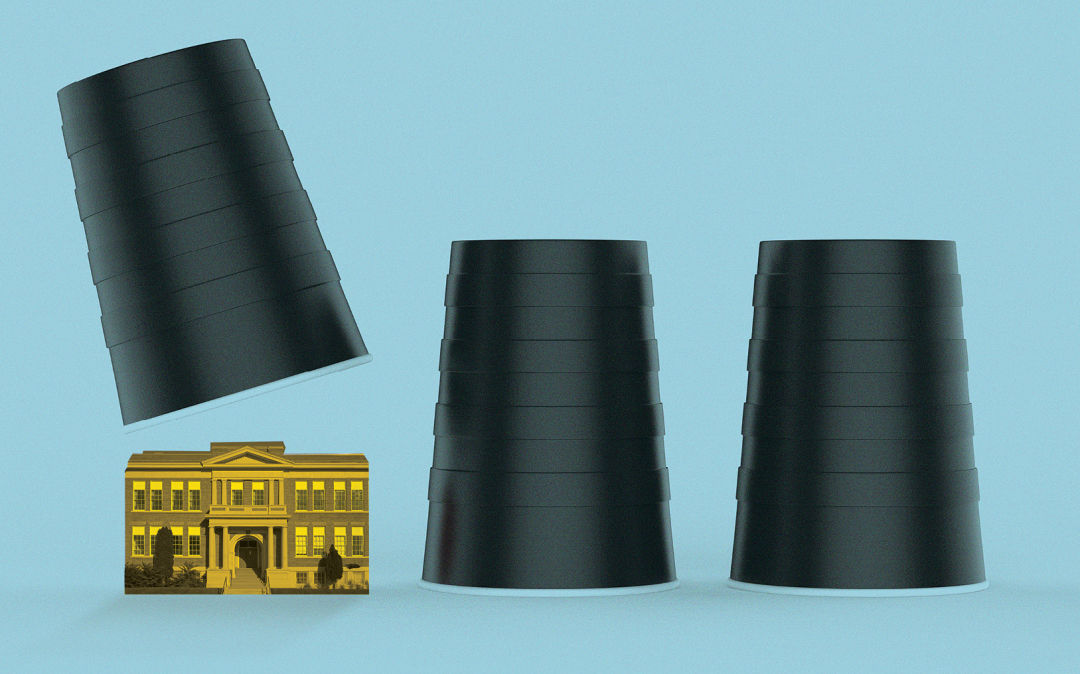What's New at Portland Public Schools? Here's Your Primer.

Image: Jen Wick
Portland Public Schools is the state’s largest school district, though most schoolkids in the greater metro area don’t actually attend PPS. From the 40,000-student suburban Beaverton Public Schools to small but growing east-county districts like David Douglas and Reynolds to tiny, tony Riverdale (serving about 600 kids between Portland and Lake Oswego), the total enrollment of surrounding districts dwarfs that of the center city. Some kids end up at private schools, too, with Catholic high schools Jesuit, Central Catholic (both once all-boys but now co-ed), and downtown’s St. Mary’s (all girls since 1859) among the largest. (Here are stats on those and many other private options.)
But to most Portlanders, PPS seems to claim an outsize share of local headlines and editorials, heated Facebook parent groups (disclosure: this writer is a member of some!), and controversies large and small. Here’s a look at some of the recent hubbub.
After more than a half-century of 50,000-plus enrollments, Portland Public Schools started to see its numbers decline in the mid-’90s. The trend prompted a series of closures, mergers, and reconfigurations of elementaries and middles into K–8 schools. Starting in 2004, the smallest four of the district’s 10 main high schools were split into even smaller schools within their campuses, part of a nationwide initiative driven by the Bill and Melinda Gates Foundation (and its funding). The superintendent was hired away by the Gates Foundation in 2007 ... and by 2012 the district abandoned those small-school experiments.
The closures and other changes disproportionately fell on schools serving lower-income communities and with more students of color. With enrollment increasing each year since bottoming out in 2008–09 (it’s now more than 49,000), the district faces a series of overlapping equity, space, and funding issues. In 2016, PPS began a switch away from K–8s back to an elementary-middle model with the opening of Ockley Green Middle School in North Portland. In fall 2018, Harriet Tubman and Roseway Heights Middle Schools will open in North and Northeast.
Old model out, new model in. Simple, right? Well, no. The two new schools each offer an example of just how complicated changes can be in Oregon’s largest school district. The opening of Tubman lingered in limbo for part of last year over environmental concerns related to its proximity to Interstate 5. From 1985 until 2007, Tubman was inner North and Northeast Portland’s historically black middle school, opened after decades of busing the area’s middle-grade children to other parts of the district. Some see its reopening as the righting of a wrong in the historic heart of Portland’s black community, and consider concerns about the building secondary.
The opening of Roseway Heights Middle, off of NE 72nd Avenue, likewise shows how sorting out one PPS challenge can trigger ongoing games of dominoes. The change included the conversion of a nearby school into a neighborhood elementary. Last year, that building housed a small alternative program for highly gifted students, as well as the first and third grades from yet another school. The new elementary and related boundary changes (some cried too many; others said there were not enough) will absorb the first and third grades. Initial plans called for the gifted program, called ACCESS, to relocate to a school that was a majority-African-American elementary until 2005, became a K–8, and was closed in 2012—but a charter with a temporary lease in that location argued to stay in it. The next plan, proposed shortly after a new superintendent took office last fall, would have moved ACCESS to a facility housing special-needs students ... whose program would have been moved to a former elementary that was now housing a Head Start and a Native American program. Amid public outcry and demonstrations accusing the district of creating hardships for its most vulnerable students, that plan was also scrapped. After months of rumors and uncertainty, the board voted the week before school let out to temporarily split the program between a Southeast middle school and a Northeast K–8 converting over the summer to an elementary.
Get the drift? Portland’s central school district has a lot of work to do to figure out both its present and its future—and, whether you have kids or not, that future will guide the city’s path.



